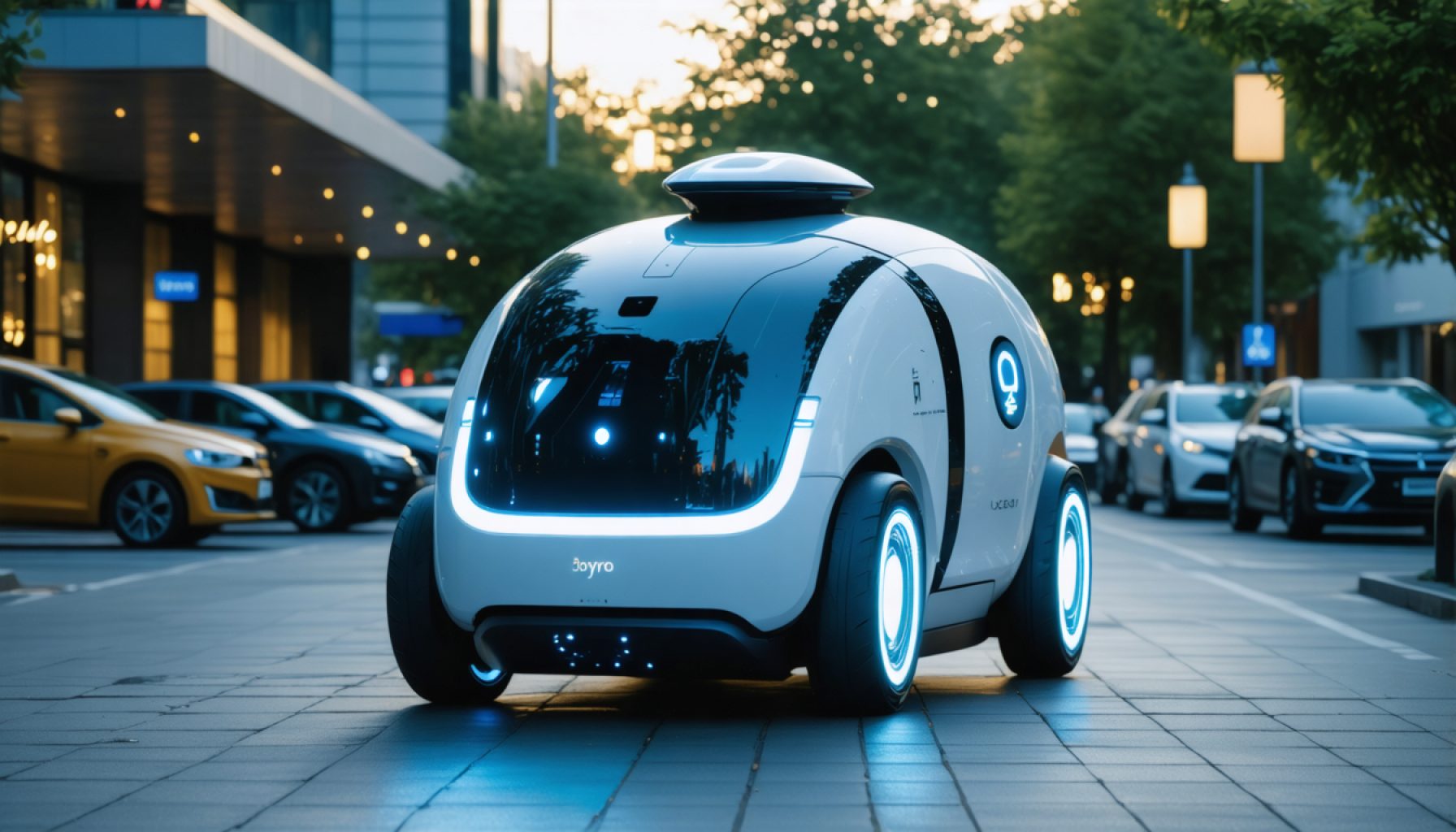- Waymo’s self-driving taxis in San Francisco accumulated 589 parking tickets in a year, costing nearly $65,000.
- Despite advanced sensors and algorithms, the autonomous vehicles struggle with the nuances of parking regulations.
- Challenges arise from San Francisco’s complex parking laws, dynamic road conditions, and ever-changing urban landscape.
- Human intuition can manage these shifting environments better than current automated systems.
- Waymo is actively analyzing its parking issues, aiming to improve through real-time adjustments and learning from mistakes.
- The parking ticket issue highlights the need for integrating human insights with technological advancements.
- This situation underscores the importance of balancing global technology with local urban knowledge for successful autonomous transport adaptation.
Amidst the bustling arteries of San Francisco’s vibrant urban tapestry, a peculiar modern conflict unfolds: Waymo’s self-driving taxis are facing off with a timeless adversary—parking regulations. Across the span of just one year, these autonomous vehicles garnered a staggering 589 parking tickets, translating to nearly $65,000 in fines. One might wonder, how can a technological marvel, designed to navigate city streets with precision, fall prey to such mundane missteps?
Waymo, Google’s ambitious foray into autonomous transport, boasts cutting-edge sensors and algorithms that avoid potential collisions and traffic snares. And yet, these futuristic vehicles seem to stumble when it comes to the rudimentary act of parking. Unlike human drivers, trained to interpret the myriad of urban signals and signs, these robot-driven cars rely purely on predefined logic and sensor input, which doesn’t always anticipate the chaos of a crowded city curb.
As these self-driving marvels roam city roads, a world of challenges unfurl before them. San Francisco, with its rigorous parking laws and dense traffic, poses a unique maze for even the most advanced AI. Temporary road conditions, unexpected blockages, and dynamic parking restrictions can befuddle the best-laid plans of Waymo’s artificial intelligence.
But the core issue might go beyond the intelligence of hardware and software. A city is a living organism, evolving and adapting faster than any update can patch an algorithm. Taxi loading zones one day become construction sites the next; what was once a tow-away zone might be cleared for concert parking another night. This fluidity is something human intuition can handle, but automated logic often finds challenging.
For those invested in the future of autonomous transport, these parking tickets serve as a vital reminder: while technology can make giant strides, the human element remains indispensable. Combining technological prowess with ground-level feedback may be the key to overcoming these challenges.
Waymo has been diligent, actively analyzing these tickets to understand their shortcomings and to make real-time adjustments. Their work suggests a future where autonomous cars learn not only from coded instructions but from every errant ticket and misparked car—a kind of urban education grounded in trial and error.
As cities worldwide look to embrace autonomous transport, integrating local knowledge with global tech holds promise. Until then, the narrative of Waymo’s parking tickets reminds us that even within the bounds of our buzzing urban jungles, technology must tread carefully, learning to coexist with its unpredictably human-made environment.
Will Autonomous Vehicles Ever Master Urban Parking?
Understanding Waymo’s Parking Predicament
Waymo, a pioneer in autonomous vehicle technology owned by Alphabet Inc., has encountered unexpected challenges amidst San Francisco’s complex urban environment. Within a single year, its self-driving taxis amassed 589 parking tickets, amounting to nearly $65,000 in fines. This raises important questions about the limitations and future trajectory of autonomous vehicles in urban settings.
Why Do Self-Driving Cars Get Parking Tickets?
1. Dynamic Urban Environments: San Francisco is notorious for its ever-changing parking regulations. The city’s adaptation to construction, events, and daily commuting patterns creates a fluctuating tapestry of rules that are difficult for AI to process in real-time.
2. Algorithm Limitations: Waymo’s vehicles are programmed with predefined logic and rely heavily on sensor data. These systems, while advanced, struggle with interpreting ambiguous or temporary signage that a human driver might intuitively understand.
3. Sensor Dependency: Sensors cannot always capture the nuanced urban signals—like a partially covered sign or unusual temporary restrictions—that guide human behavior.
Real-World Use Cases and Industry Trends
– Urban Testing: Self-driving cars face unique challenges in urban areas versus rural or highway scenarios. Continuous real-world testing in dynamic settings is essential for refining AI capabilities.
– Collaborative Solutions: Developing systems that can integrate real-time city data—such as construction maps or event schedules—can help improve parking accuracy.
– Policy Adaptation: Cities could reconsider parking laws to better accommodate autonomous vehicles by creating designated zones or updating signage standards to facilitate machine interpretation.
Security and Sustainability Considerations
– Data Security: As vehicles collect extensive real-time data, ensuring privacy and security is paramount to prevent misuse.
– Environmental Impact: Autonomous vehicles promise reduced emissions in the long term, contributing to more sustainable urban transport systems if integrated effectively with city planning.
Pros and Cons Overview
Pros:
– Potential for reduced traffic congestion as AI manages flows.
– Increased safety with reduced human error in navigation.
Cons:
– Current AI’s inability to adapt dynamically to changing urban environments.
– High costs of fines leading to increased operational expenses.
Actionable Recommendations
1. Enhance AI Learning: Waymo could expand its machine learning frameworks to better simulate dynamic urban scenarios, improving adaptability and decision-making capabilities.
2. Engage with Local Authorities: Collaborating with city officials can lead to innovation in infrastructure and signage that benefits both human and machine drivers.
3. Public Education: Increasing public understanding of autonomous vehicles can foster trust and smoother integration with existing urban transport systems.
Insights and Predictions
As autonomous technology advances, the seamless integration of these vehicles into complex urban landscapes like San Francisco will greatly depend on sophisticated AI capable of learning from and adapting to rapid and unpredictable changes. Companies like Waymo must balance technological advancement with practical, on-the-ground problem-solving.
For the latest updates on autonomous technologies and AI advancements, you can visit the main site of Waymo at waymo.com.
